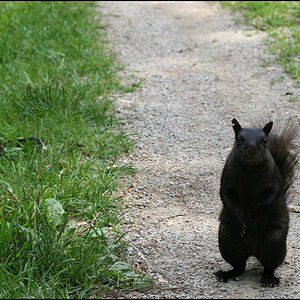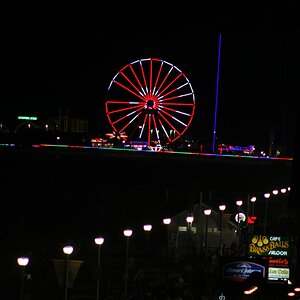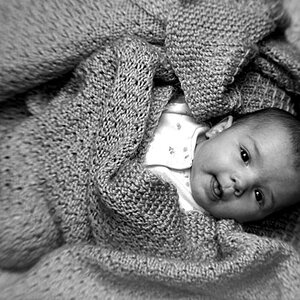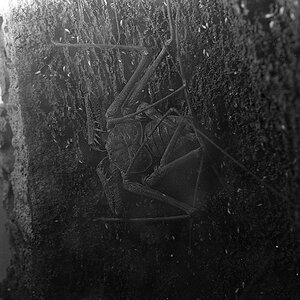I accidentally shot a roll of triX B/W 400 at 200 ASA. Since overexposed shots come out brighter, I would think it would be better to develop the film LONGER, since that makes them darker/ higher contrast. But most sites tell you to do the opposite, and I don't understand why.
Navigation
Install the app
How to install the app on iOS
Follow along with the video below to see how to install our site as a web app on your home screen.

Note: This feature currently requires accessing the site using the built-in Safari browser.
More options
You are using an out of date browser. It may not display this or other websites correctly.
You should upgrade or use an alternative browser.
You should upgrade or use an alternative browser.
push/pull for overexposed film
- Thread starter rbailey23
- Start date
gsgary
Been spending a lot of time on here!
- Joined
- Oct 31, 2008
- Messages
- 16,143
- Reaction score
- 3,002
- Location
- Chesterfield UK
- Website
- www.gsgary.smugmug.com
- Can others edit my Photos
- Photos OK to edit
You develope them for less time thats how pulling works
Helen B
TPF Noob!
- Joined
- Sep 16, 2007
- Messages
- 3,296
- Reaction score
- 467
- Location
- Hell's Kitchen, New York
- Can others edit my Photos
- Photos NOT OK to edit
Overexposing negative film means that the image on the film will be darker, not lighter (it will only look lighter after it is reversed during printing). Therefore you want to develop less, to reduce the amount the film darkens in the developer.
It is the same for regular reversal (slide) film, because that is first developed to a negative.
It is the same for regular reversal (slide) film, because that is first developed to a negative.
timor
Been spending a lot of time on here!
- Joined
- Feb 28, 2011
- Messages
- 5,905
- Reaction score
- 890
- Location
- Toronto ON
- Can others edit my Photos
- Photos NOT OK to edit
Hi and welcome here. Do not wonder, your thinking is pure digital and film has nothing to do with that technology. It operates on different principles based on real light absorption and if your film absorbed too much the only way to mitigate it is to reduce the development and not to use all of that absorbed light and get the negative in proper optical densities. Over exposure is done routinely by photographers seeking reach and less contrasty negatives.I accidentally shot a roll of triX B/W 400 at 200 ASA. Since overexposed shots come out brighter, I would think it would be better to develop the film LONGER, since that makes them darker/ higher contrast. But most sites tell you to do the opposite, and I don't understand why.
duhast
TPF Noob!
- Joined
- Mar 5, 2013
- Messages
- 240
- Reaction score
- 39
- Location
- SoCal
- Can others edit my Photos
- Photos OK to edit
Here's what is going on with film...I accidentally shot a roll of triX B/W 400 at 200 ASA. Since overexposed shots come out brighter, I would think it would be better to develop the film LONGER, since that makes them darker/ higher contrast. But most sites tell you to do the opposite, and I don't understand why.
The emulsion of the film (the light sensitive part) is made of silver halide crystals. Silver halide changes when exposed to light, the more light, the more change. It is the developing process that completes the change of the crystals, and the 'fixing' process that removes all the unexposed crystals, leaving you with a photo negative. There is latitude, range, in all of this process. Time is a factor, so developing time is going to change the halides more or less depending on how long the time is.
So, film that has been overexposed, in your case one stop, is going to look more and more overexposed the longer the development time goes. Those halides that were hammered by light will just continue to cook and cook and cook with longer development. On the other extreme, if you used an ridiculously short development time, like 30 seconds, you would end up with film that would look grossly underexposed, despite the fact that the exposure is +1.
The famous Zone System of exposure has a basic rule that you 'overexpose and under-develop'. This gives you shadow detail and un-blown highlights.
So if you are going to develop that film, do the time/temp calculations to develop it minus 1, that should give you film that is like it was exposed at 400.
Helen B
TPF Noob!
- Joined
- Sep 16, 2007
- Messages
- 3,296
- Reaction score
- 467
- Location
- Hell's Kitchen, New York
- Can others edit my Photos
- Photos NOT OK to edit
There is a Kodak tech note for D-76: http://www.kodak.com/global/en/professional/support/techPubs/j78/j78.pdf but it only mentions pushing, as does the tech note for Tri-X. The massive dev chart is good for guide times for pulling: B&W Film Developing Times | The Massive Dev Chart
Compare those times with the time you like for exposure at ISO 400 to arrive at a suggested time for EI 200.
Compare those times with the time you like for exposure at ISO 400 to arrive at a suggested time for EI 200.
timor
Been spending a lot of time on here!
- Joined
- Feb 28, 2011
- Messages
- 5,905
- Reaction score
- 890
- Location
- Toronto ON
- Can others edit my Photos
- Photos NOT OK to edit
My apologies, too many kids around cannot figure out film technology. Maybe for better understanding principles of film photography can you take a look at this ?btw i do not own a digital camera and it is not "digital thinking" .
http://lit.lzicka.eu/Black.and.White.Photography.(2005),.3Ed.(036373052).LotB.pdf
It is a book by Henry Horenstein, a good American photographer and scholar.
yikes, if i'm reading the massive chart correctly, it looks like the only difference between developing at 400 iso and stopping down to 200 is 15 seconds. That means i would be clocking at 9:30 instead of 9:45. that's hardly a difference at all.
timor
Been spending a lot of time on here!
- Joined
- Feb 28, 2011
- Messages
- 5,905
- Reaction score
- 890
- Location
- Toronto ON
- Can others edit my Photos
- Photos NOT OK to edit
Here you go.Tri X has huge tolerances, but I would cut rather 30 sec.
Here something to read abot it:
http://photo.net/bboard/q-and-a-fetch-msg?msg_id=001YOW
http://www.apug.org/forums/forum37/39395-pulling-tri-x.html
Here something to read abot it:
http://photo.net/bboard/q-and-a-fetch-msg?msg_id=001YOW
http://www.apug.org/forums/forum37/39395-pulling-tri-x.html
Last edited:
compur
Been spending a lot of time on here!
I accidentally shot a roll of triX B/W 400 at 200 ASA. Since overexposed shots come out brighter, I would think it would be better to develop the film LONGER, since that makes them darker/ higher contrast. But most sites tell you to do the opposite, and I don't understand why.
When you set your camera to a low ISO, you are telling the camera, "this film is not very sensitive to light," so your camera gives it more exposure. Then, since it got more exposure, it will need less development to bring out the image.
After doing a little reading I am realizing that the pull process will cause the photo to lose contrast. I wonder if I would be better off pulling the film and using a higher contrast filter in the enlarger? or just developing the film normally and using a lower contrast filter....? note that i was shooting in clear daylight.
Last edited:
timor
Been spending a lot of time on here!
- Joined
- Feb 28, 2011
- Messages
- 5,905
- Reaction score
- 890
- Location
- Toronto ON
- Can others edit my Photos
- Photos NOT OK to edit
As I said before, shorten the development just by a little, if you don't your highlights might be hard to print (they will be dens). You will not loose too much of a contrast, maybe half a filter value. You may also use more contrasty paper developer or add for that occasion 1/2 g of potassium bromide to your regular one. You may also try compensating development. Over exposing TX by one stop is not such a big deal thanks to its large latitude.After doing a little reading I am realizing that the pull process will cause the photo to lose contrast. I wonder if I would be better off pulling the film and using a higher contrast filter in the enlarger? or just developing the film normally and using a lower contrast filter....? note that i was shooting in clear daylight.
Josh66
Been spending a lot of time on here!
- Joined
- Oct 31, 2007
- Messages
- 14,593
- Reaction score
- 1,239
- Location
- Cedar Hill, Texas
- Can others edit my Photos
- Photos NOT OK to edit
yikes, if i'm reading the massive chart correctly, it looks like the only difference between developing at 400 iso and stopping down to 200 is 15 seconds. That means i would be clocking at 9:30 instead of 9:45. that's hardly a difference at all.
The Massive Dev Chart is usually a good starting point, but it's not the bible. The times listed there may not be to your liking.
I push much more often than pull, but a 15 second change in dev time sounds pretty insignificant to me...
Personally (this is totally just a guess - I would do a test roll before trying to develop anything important), if your normal time was 9:45, I would try something like 8 minutes.
What developer are you going to use?
bsinmich
TPF Noob!
- Joined
- Dec 25, 2012
- Messages
- 171
- Reaction score
- 14
- Location
- Holland, Mi
- Can others edit my Photos
- Photos NOT OK to edit
You are only 1 stop off on correct exposure. The latitude of the film will not be a problem at only 1 stop. You will have minimal problems at normal development times. There is that much variation many times within a single photograph. Cut a few seconds off development time and you should be safe.
Most reactions
-
 457
457 -
 288
288 -
 270
270 -
 268
268 -
 211
211 -
 189
189 -
 179
179 -
 178
178 -
 176
176 -
 173
173 -
 162
162 -
 126
126 -
 117
117 -
I
108
-
 94
94
Similar threads
- Replies
- 6
- Views
- 2K

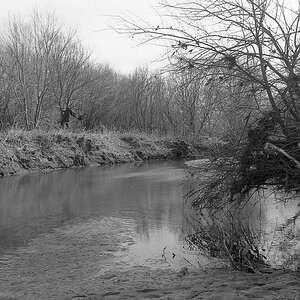

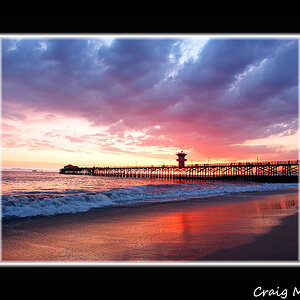

![[No title]](/data/xfmg/thumbnail/32/32806-e16129723fd659a65a21d27ec96c2637.jpg?1619735667)

